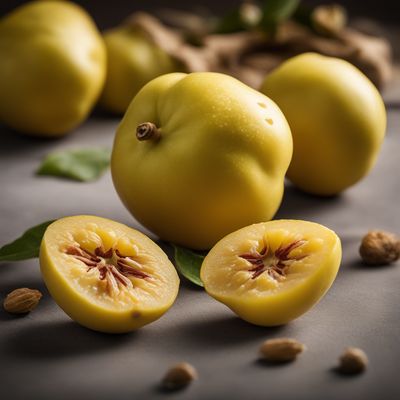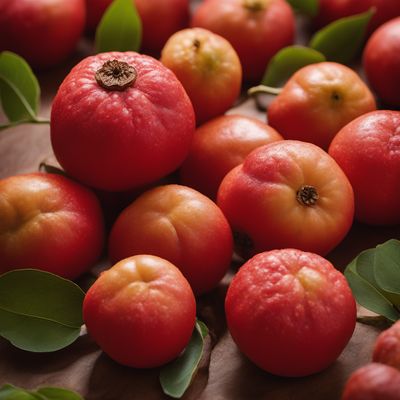
Ingredient
Japanese quinces
The Delicate Beauty of Japanese Quinces
Japanese quinces are small, fragrant fruits with a vibrant golden-yellow color and a slightly fuzzy skin. They have a tart and tangy flavor, reminiscent of a combination of apples and lemons, and a firm yet juicy texture. Their appearance adds a pop of color and sophistication to any dish.
Origins and history
Japanese quinces have been cultivated in Japan for centuries and are deeply rooted in Japanese culture. They are often used in traditional Japanese tea ceremonies and are highly regarded for their aesthetic appeal. In addition to Japan, they are also grown in other parts of Asia and have gained popularity in various cuisines around the world.
Nutritional information
Japanese quinces are a good source of vitamin C and dietary fiber. They are low in calories and fat, making them a healthy addition to your diet.
Allergens
There are no known allergens associated with Japanese quinces.
How to select
When selecting Japanese quinces, look for fruits that are firm and free from blemishes or bruises. The skin should have a vibrant golden-yellow color. Avoid fruits that are overly soft or have a dull appearance.
Storage recommendations
To prolong the freshness of Japanese quinces, store them in a cool, dry place away from direct sunlight. They can be kept at room temperature for a few days or refrigerated for up to two weeks.
How to produce
Japanese quinces can be grown in your own backyard or garden. They thrive in well-drained soil and require full sun to produce the best-quality fruits. Regular pruning and proper care are essential for optimal growth and fruit production.
Preparation tips
Japanese quinces can be enjoyed in a variety of ways. They can be eaten raw, sliced and added to salads, or used to make jams, jellies, and preserves. They can also be cooked and used in pies, tarts, and other desserts. Additionally, their fragrant juice can be used to flavor beverages or cocktails.
Culinary uses
Japanese quinces are commonly used in Japanese cuisine, particularly in traditional sweets and desserts. They are also popular in European cuisines, where they are used in jams, jellies, and baked goods.
Availability
Japanese quinces are commonly available in Japan and other Asian countries. They can also be found in specialty grocery stores or farmers markets in other parts of the world.
More ingredients from this category
Recipes using Japanese quinces » Browse all

Vietnamese-style Grilled Lamb Chops
Tender and Fragrant Vietnamese Grilled Lamb Chops

Otoro Nigiri Sushi
Heavenly Delights: Otoro Nigiri Sushi

Crispy Pork Knuckles with Tropical Twist
Island Delight: Crispy Pork Knuckles with a Taste of the Sea

Sarawakian-style Munster Cheese Puffs
Sarawakian Cheese Delights: A Fusion of French and Local Flavors

Roasted Wild Mouse
Savory Delight: Roasted Wild Mouse Vietnamese Style
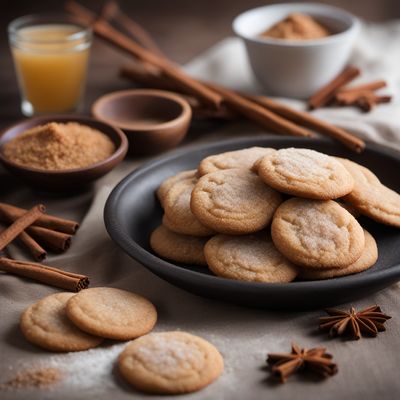
Lao-style Cinnamon Sugar Cookies
Spiced Delights: Lao-inspired Cinnamon Sugar Cookies
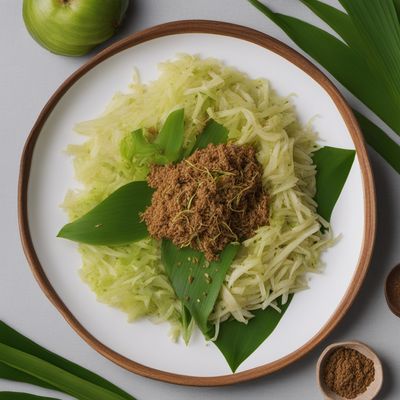
Vanuatu Laplap
Tropical Taro Delight
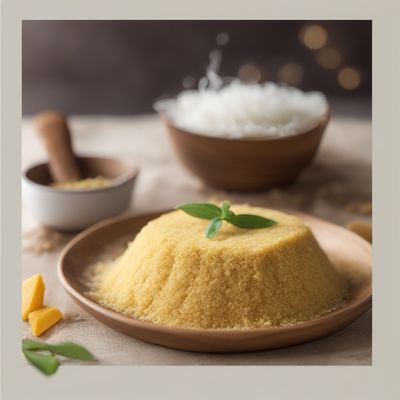
Makassar-style Cornbread
Savory Cornbread with a Makassar Twist

Mì Quảng - Vietnamese Turmeric Noodle Bowl
Golden Delight: A Vibrant Twist on Vietnamese Noodle Bowl
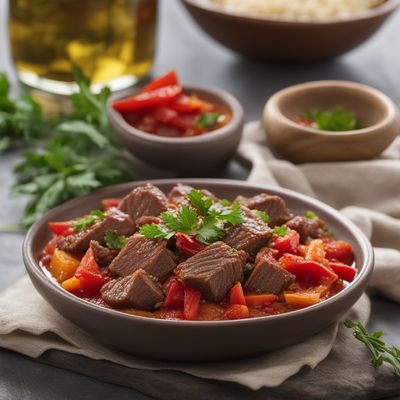
Valdiviano Island Delight
Christmas Island Valdiviano: A Fusion of Flavors

Sundanese-style Semla
Sundanese Delight: A Unique Twist on Semla

Akami Nigiri Sushi
Savor the Delicate Harmony: Akami Nigiri Sushi
